With a Pinch of Salt

Rabbi Avraham Juravel’s career as the OU’s reigning expert on food production has taken him to 50 American states and 40 foreign countries
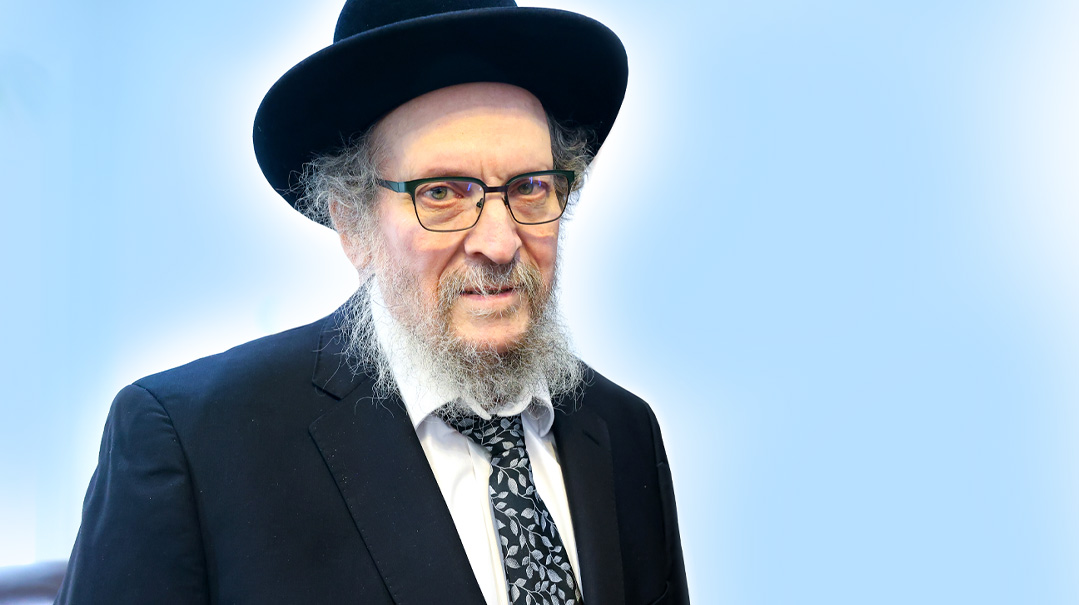
Photos: Itzik Roytman
The sign hanging in Rabbi Avraham Juravel’s office in the kashrus division at the Orthodox Union’s lower Manhattan headquarters says it all about his approach to the field of kashrus — and life — in five words: “Think out of the box.” It’s an attitude that has made him, in the words of Rabbi Sholem Fishbane, executive director of the AKO kashrus umbrella group, “the most unique person working in kashrus today.”
His career as the OU’s reigning expert on food production has taken him to 50 American states and 40 foreign countries, enabling him to identify thousands of ingredients (sans a chemistry degree) and tour a plant while pointing out where every pipe leads and what every piece of machinery does. He’s a sought-after lecturer on kashrus topics, too, whose shiurim were recently published as a popular sefer.
Blessed with razor-sharp sleuthing skills and a preternatural sixth sense for what the eye can’t see — and, he emphasizes, a heavy dose of siyata d’Shmaya — Reb Avri, as he’s known to kashrus mavens worldwide, is able to catch things that elude most other people. That, in turn, has enabled him to spare kosher consumers from serious problems they didn’t even know existed, and sometimes, to solve a manufacturing mystery, too.
Once, he inspected a huge chocolate factory which had two completely separate production lines for milchig and pareve, with two separate sets of equipment. The non-Jewish owner approached him with a problem he was grappling with: He kept finding between a hundred to two hundred parts-per-million (PPMs) of dairy in his pareve chocolate, which meant lactose-intolerant consumers could no longer buy his products. He’d hired expensive consultants to find the source of the contamination, but to no avail, and turned to Rabbi Juravel in desperation.
“So I’m walking through the place,” Rabbi Juravel recalls, “and looking at the various machines… There were three storage tanks, three sweco [filtering] machines, every pipe connected to the right machine — I checked it all. But one worker operates all three, and as the chocolate is going around and around in the sweco filter, some of it will hit the side and become solid. So he has a spatula to scrape the chocolate off the sides. And then I saw it — the spatula is in his back pocket, and he’s using the same spatula for all three machines, dairy and pareve alike. I said to the owner, ‘Marty, right there are your PPMs — and by the way, it’s a kosher violation too.’ He didn’t even give me a chocolate chip for solving his problem, but I think I made a kiddush Hashem. So you have to see the metzius and you have to have siyata d’Shmaya to be there at the precise moment when the worker walks by.”
In another instance, Rabbi Juravel traveled to a Chinese vegetable cannery to examine their records before giving a hechsher to their canned bamboo shoots.
“They assigned a Chinese college student to be my translator,” he recalls. “The kid was like a walking, talking dictionary but didn’t understand a thing. As it turned out, that was the best thing that could have happened.
“I asked to see the records, but they were in Chinese, so I gave it to the translator to read. He told me it said the company had three workshops, one for fruit, a second one for vegetables, and a third one for treife seafood. When I asked to see Workshop # 3, I was told, ‘We don’t have the key, it’s locked.’ I said I just wanted to see it from the outside. When I looked through the window, I saw it had the same equipment as Workshop #2 where the bamboo shoots were supposed to be made.
“So I now knew the shoots could be made in either workshop, which meant that I needed real records of where they were, in fact, made. I told the translator, ‘Keep going,’ and he read on: ‘The workers from Workshop #2 were on vacation so we had to make it in Workshop #1 but we put on the code from #2 because it’s a vegetable and supposed to be made in #2.’ I asked for a copy of the records and took the next plane out to Hong Kong, where I was staying over Shabbos.
“I called New York and said, ‘No hechsher this year.’ They asked me why, and I said, ‘These people are playing games, their codes mean nothing.’ I faxed the records to someone at the importer’s office who said, ‘I’m dealing with them for 20 years — how did you catch this?’
“ ‘Because Hashem smiled at me and helped me to do my job so people could keep kosher,’ I answered.”
Rabbi Juravel emphasizes that giving a hechsher doesn’t mean just sitting at a desk and going through the ingredients on the computer.
“You have to understand how a product is made in order to give a hechsher for it. For example, I was once at a factory in China that makes citric acid. This involves a process of glucose fermentation, taking a certain bacteria and fermenting sugar with it to produce citric acid. I had my Chinese interpreter there with his dictionary, and I said to the factory owner, ‘I’d like to see the culture you’re using.’ He showed me an amylase enzyme, but I said, ‘All this enzyme does is convert cornstarch into corn sugar. But then you’re putting a culture into that sugar to produce citric acid. I need to know what that culture is.’
“He replied, ‘Old Chinese secret, we only use enzyme, not culture.’
“We went back and forth like this for an hour, until finally I got up to leave. The owner said, ‘Wait, I need kosher certificate.’
“I said, ‘You need certificate? I need culture.’
“ ‘Ah, culture?’ On the spot he showed it to me, and it turned out the culture was grown on wheat, which made it problematic for Pesach.”
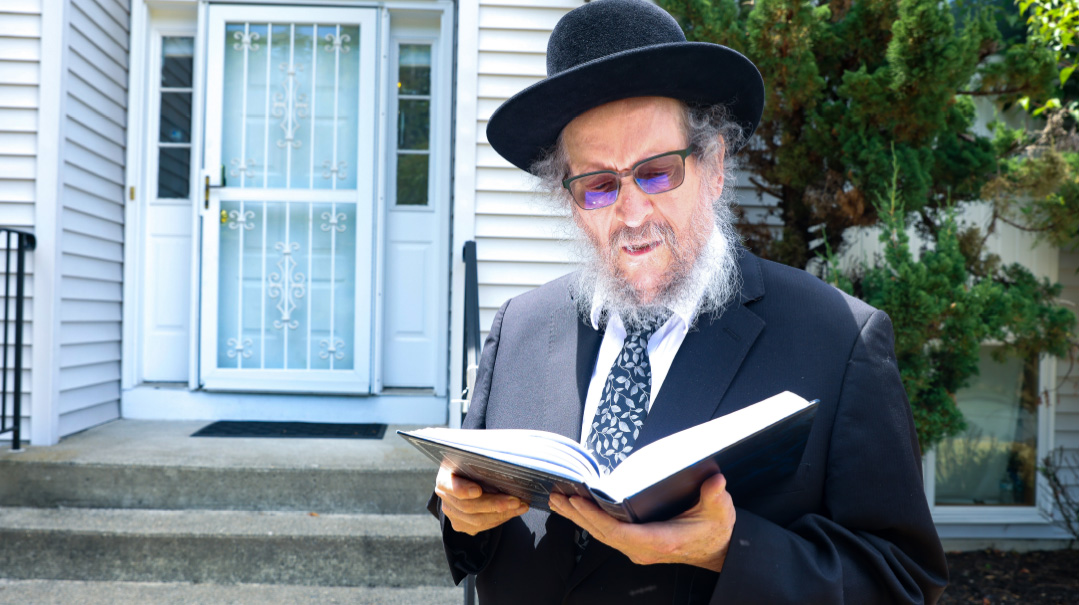
Rabbi Juravel shrugs off the praise that he has a special ability catch things others might miss. “Hashem helps me to do my job so people can keep kosher”
The foundation for Rabbi Juravel’s kashrus career was laid in 1980. He was a newly minted musmach of Beth Medrash Govoha when he landed a position on the kosher supervision staff of K’hal Adas Yeshurun (KAJ), the Breuer’s kehillah in Washington Heights. He spent 11 years there, serving as the personal assistant to Rav Yaakov Posen, the kehillah’s dayan. He drove Dayan Posen wherever he needed to go, and he found the experience to be invaluable.
“I really learned kashrus from Rav Posen,” he says. “I accompanied him on trips to supervise the building of mikvaos, and he was on top of every last detail, even putting his hands into the PVC pipes to make sure they were smooth inside. We went to many factories together and I got to see how he looked at a factory. It was real shimush. He once told me there’s a difference between how a rav looks at a factory and how a mashgiach looks at it.”
There were also many other disparate influences that helped shape Rabbi Juravel’s colorful and influential career, and some of them are visible on the dining room walls of his Monsey home. There’s a large portrait of the legendary mashgiach of Beth Medrash Govoha, Rav Nosson Wachtfogel, alongside a framed semichah from Rav Shneur Kotler, a nod to the seven years he spent in Lakewood’s Torah citadel. Further down are photographs of Rav Yisroel Meir Kagan and Rav Yitzchok Wasserman, heads of the Denver yeshivah, where he learned in his youth, and another of Rav Mordechai Shulman, rosh yeshivah of Slabodka in Bnei Brak, who spent many a Shabbos in the Juravel home in the 1950s and 1960s.
And then there are two prominent photos featuring Rav Naftali Halberstam, the Tchakaver Rebbe, who headed the kosher supervisory division of Jerusalem’s Badatz Eidah Hachareidis for over half a century until his recent petirah at age 94. His close relationship with Rav Halberstam and others in the world of heimish hashgachahs has enabled him, according to CEO of OU Kosher Rabbi Menachem Genack, “to fulfill the very important function of serving as a bridge to that world. It’s a universe unto itself, which many of us in the non-chassidic kashrus world aren’t connected to. But these worlds need each other, and Reb Avri knows and understands both of them.”
It was Rav Halberstam who pushed Rabbi Juravel to publish his sefer, Midi D’achilah, and fittingly, it also contains a 25-page collection of the Rebbe’s inspirational writings on the central importance of kashrus.
“I had that made for my wife,” Rabbi Juravel tells me, pointing to a leather-bound copy of the sefer on a stand in the dining room, as he hands me a copy of my own.
The sefer — whose popularity may soon send it into a third printing — is very practical and down-to-earth, much like its author. There’s plenty of in-depth halachic analysis in its pages, but its uniqueness lies in its thorough explication of the nitty-gritty contemporary realities of manufacturing, mechanics, and food chemistry.
As he speaks of the Tchakaver, Rabbi Juravel’s memories come tumbling forth. “He started off in the 1950s when the great Rav Zelig Reuven Bengis was still the rav of the Eidah, and he once showed me a paper Rav Bengis gave him stating, ‘Rav Halberstam is my representative, and whatever he says is as if I said it.’ He left a tzava’ah asking for that paper to be buried along with him, because, he said, ‘Dos iz mein pas tzu Gan Eden [that’s my entry pass to Gan Eden].’
“The Rebbe’s younger brother was Rav Moshe Halberstam, one of the leading poskim on the Badatz, and they both davened in the same beis medrash and both spoke at Shalosh Seudos. They set an amazing example in the way they gave each other honor, a true display of ‘Hinei mah tov u’mah na’im sheves achim gam yachad.’ And when Reb Moshe was niftar and his son took over, he too spoke after the Rebbe. When I would come in to Shalosh Seudos, I was the only one who got a plate and a fork because the Rebbe would call out, ‘Breng ah teller mit ah gupel, s’iz doh ah Litvak [bring a plate and a fork, there’s a Litvak here].’ ”
Rabbi Juravel’s litvish credentials are indeed impeccable, with a grandfather who received his kabbalah in shechitah from Rav Refoel Shapiro, Rosh Yeshivah of Volozhin and father-in-law of Rav Chaim Soloveichik. It was the zeide Reb Shmuel Zev Juravel, in fact, who first brought a turkey — then known as “der Amerikanishe oyf,” the American bird — to Reb Chaim for inspection. In order to be deemed kosher, birds need a mesorah, and until today, Briskers eat turkey because it passed muster with Reb Chaim.
Reb Shmuel Zev fled Belarus in 1916 for Harbin, China, to escape serving in the czar’s army. Harbin’s community of Russian Jewish émigrés was so large that he served as the third shochet in town. Ten years later, the family immigrated to Boro Park, Brooklyn, where Rabbi Juravel’s father learned under Rav Dovid Leibowitz in Yeshiva Torah Vodaath, and later in Yeshiva Chofetz Chaim.
Rabbi Genack aptly refers to Rabbi Juravel as a bridge to the chassidic world, and indeed, he has developed a large and devoted following, particularly within the chassidic community, for shiurim which demystify the process of kosher supervision and debunk long-held myths about what is and isn’t kosher.
It all began 15 years ago, when Rabbi Juravel gave a shiur in the Satmar kollel in Monroe. Afterwards, a group of six yungeleit approached and said, “You gave us an overview, but we want to learn kashrus in depth. Please give us a weekly shiur.” He’s been doing so in Kiryas Joel ever since.
Rabbi Juravel recalls when the best guy in the shiur suddenly stopped coming. “I asked the other attendees what had happened to him, and they told me he’d been forced to go to work so he could feed his family. So I called him up and asked for his permission to go and speak with his rebbe, Rav Zalman Leib of Satmar, about keeping him in kollel.”
It was classic Rabbi Juravel, unconventional and rooted in caring about another Jew, and the fellow agreed. Rabbi Juravel said to the Rebbe, “Here you have a gem of a person, who has a talent for kashrus matters, and you have a kashrus organization. Why not keep him in kollel and put his abilities to good use in this field?” His overture succeeded in keeping the fellow in kollel for a time, which he still considers to be a “big accomplishment.”
His shiurim aren’t limited to the beis medrash. “I sometimes take those who attend my shiurim on field trips,” he says, “and once I went with a group from Monroe to a flour mill to show them how it’s produced. We saw the tempering of the wheat, which means soaking it in water to make it softer and easier to grind. People think this involves just shpritzing the wheat kernels with water, but we walked up all the steps to the top of a silo six stories high — this was before my knee replacement, but what don’t you do for your talmidim? — and we opened a bin of wheat only to find it swimming in water.
“Eventually, after a few hours, the water becomes fully absorbed in the wheat, at which point it will be milled into flour. That’s why I tell people that according to the Shulchan Aruch flour is real chometz, and people who say otherwise haven’t been to the mill and haven’t seen the reality.”
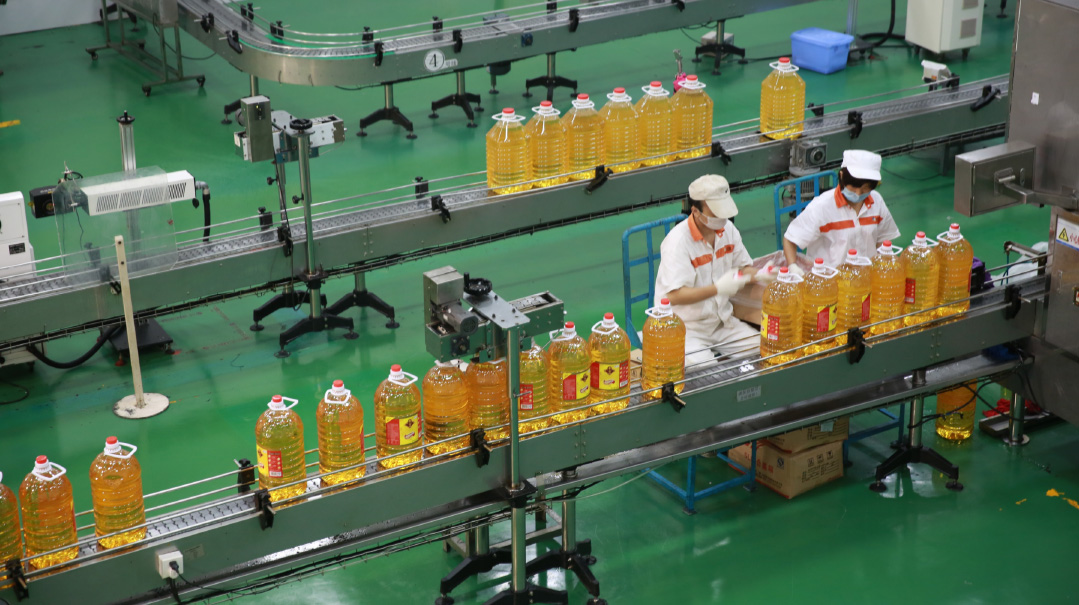
After years of working for KAJ, along with shorter stints at the Kof-K and OK supervisory agencies, Rabbi Juravel joined the OU’s kashrus staff, where he has two primary areas of responsibility. One of these is a lead role in the ingredient department, determining whether the components of a new product need a hechsher, and if they do, whether they qualify for one.
AKO’s Rabbi Fishbane (who also heads the kashrus division of the Chicago Rabbinical Council), says that AKO’s most important committee is one where a few select kashrus experts meet monthly to reach unanimity on which ingredients do not need hashgachah. If every single ingredient would need a hashgachah, he explains, the world of kashrus supervision would be unable to function. Rabbi Juravel, he says, “is at the very forefront of this group, sort of the posek acharon when it comes to ingredients. That’s not just because of his expertise but also his hands-on experience over so many years in so many situations.”
But how did someone with no academic training — who left the Yeshiva of Eastern Parkway after tenth grade and finished high school at Chicago’s Telshe Yeshiva in order to escape the Regents exams — gain the in-depth knowledge of food chemistry he now has? Rabbi Juravel answers simply, “Everything I know I learned on the job.”
How does Rebbetzin Juravel and their children feel about his globetrotting on behalf of kashrus? “Both my wife and my children were always encouraging because they knew that my avodas hakodesh of making sure Jews had kosher food to eat was a good reason for my absences,” he says.
He recalls Rav Moshe Halberstam ztz”l once telling him about a woman, a lifelong resident of Meah She’arim, who was on a plane to New York on September 11, 2001 when her plane was diverted to Canada. With no rooms available in the local hotel, people came to the airport and took stranded passengers home with them, and this poor woman ended up staying with a non-Jewish family with whom she couldn’t even communicate. When she refused all the food they offered, they took her to the supermarket to see if she could find something to eat, and she found sardines with an OU on it. “ ‘This,’ Reb Moshe told me, ‘is the reason you work at OU. Thanks to the work you do, she had something to eat.’ And my wife and children echo that sentiment.”
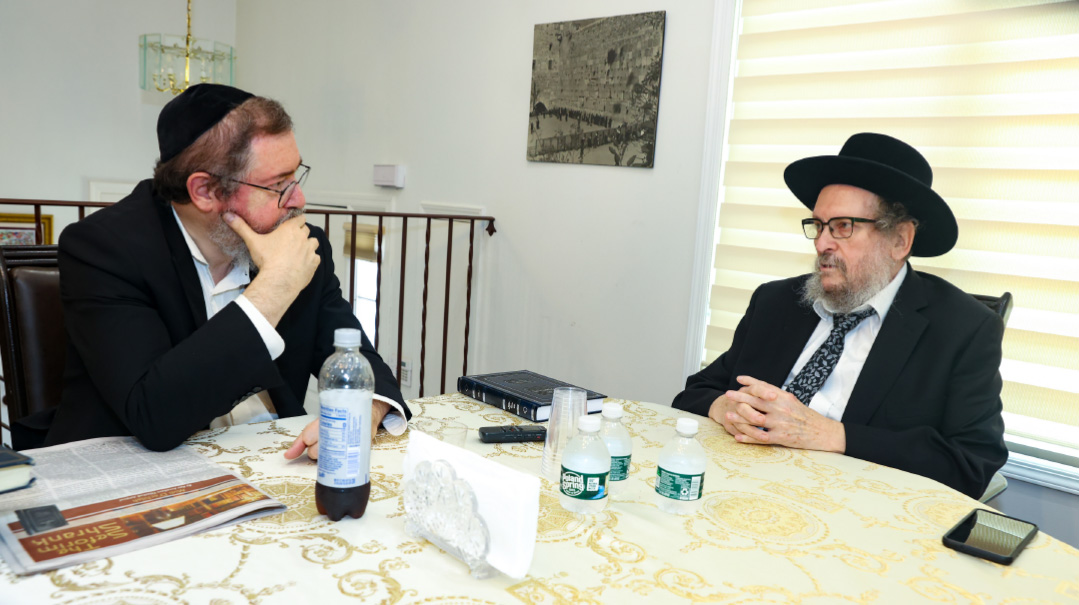
“Everything I know I learned on the job,” Rabbi Juravel, who had no academic training, confided to Mishpacha’s reporter. Yet his broad, technical and in-depth knowledge of food chemistry has made him the “posek acharon” in the kashrus industry
Rabbi Juravel’s shiurim are full of novel insights that emerge from his insider’s knowledge of products and processes, and he shares one such surprising observation from a talk he’d given a few nights earlier in Boro Park’s Bobov 45 community: Although we all know that animal glycerin is treif, Rabbi Juravel reveals that vegetable glycerin can be non-kosher, too.
“Any fat or oil,” he begins, “has two components, glycerin and fatty acids, and it’s a chochmah to know how to separate them. There are several methods that can be used to achieve this separation. Nowadays, the government and the environmentalists push a product called biodiesel, which is more expensive than petroleum, so the only reason anyone buys it is because of government subsidies. The way to produce biodiesel is by taking the fatty acid part of the oil and bonding it to methanol. That creates what’s called methyl ester, otherwise known as biodiesel, which you can put in the gas tank of a truck.
“Once the fatty acids have been removed, what’s left from the oil is the glycerin, so any biodiesel manufacturer has glycerin as a byproduct. Today, because biodiesel is so big, there’s a product on the market called UCO, an acronym for used cooking oil. Restaurants have to change their oil often, so what do they do with the old oil? They sell it to manufacturers of biodiesel, so there’s a lot of glycerin from UCO on the market all over the world. I explained in the shiur that although most UCO comes from cooking and frying non-kosher meat and seafood — a true issur d’Oraisa — the glycerin that is its byproduct can legally be sold as vegetable glycerin.”
Rabbi Juravel is also one of a handful of people who have to sign off before any new company is approved for supervision by the OU. He reads the mashgiach’s initial inspection report and carefully examines the ingredient list. And most importantly, he draws on his long experience with all types of companies across the globe to spot any issues on which a company might not be entirely forthcoming.
He quotes his first and most influential mentor in kashrus, Rav Posen, who told him, “First of all, always look at everything else they’re doing at the plant, not just at what this customer wants supervision for.” A mashgiach has to know everything there is to know about how a production line works, and he has to be able to confront a company’s owners when it’s clear they’re dissembling. Being both brilliant and plainspoken, Rabbi Juravel has what it takes on both counts.
He tells of the time he was inspecting a factory that produced emulsifiers such as mono and diglycerides and polysorbates, which present a major kashrus concern because they involve fatty acids, glycerin, and the like. This factory made both kosher and non-kosher emulsifiers, and Rabbi Juravel asked the factory’s owner how they were able to produce both in the same facility.
The owner showed him that they had both a kosher reactor and a non-kosher reactor, but Rabbi Juravel wasn’t impressed. “That’s nice,” he told them. “But I see only one weigh tank, not two.” He explains that in order to weigh glycerin and fatty acids, which are stored in huge tanks of 10 to 15,000 pounds, the material is pumped into a tank with a scale called a weigh tank. From there it’s pumped into the reactor.
“We don’t use the weigh tank for the non-kosher, we do that by hand,” the owner replied.
Rabbi Juravel didn’t fall for it. “I wasn’t born yesterday,” he countered. “I may not have as many degrees in chemistry as you do, but you can tell it to the Marines. Not happening.”
Rabbi Fishbane notes that “most experts in the kashrus field tend to have in-depth knowledge in the area of food production or in the area of food service, meaning eateries and stores, but not both. Rabbi Juravel is the rare kashrus professional who’s extremely knowledgeable in both areas.” And as word of his wide-ranging mastery of the complexities of kashrus has spread, he’s become a central address for queries from countless mashgichim and rabbanim.
For his part, Rabbi Juravel is happy to take calls from rank-and-file kosher consumers, too. “I have my regular customers,” he says. “My cell phone number isn’t secret, and in fact, I put it on my business card for that reason.” Just during our two hours together, he fielded around six calls, and an average day can bring double that number.
After listening patiently to the callers’ sometimes long-winded questions, he responds pithily and to the point, unless he feels a response is not in order. To one caller inquiring about various hechsherim, he says, “I’m not Good Housekeeping, so I don’t provide seals of approval on other hechsherim.” Rabbi Juravel believes it’s unethical for him to answer such inquiries, and that it’s up to the consumer either to become educated regarding a particular kashrus agency’s standards or to ask his own rav.
To another asking about frozen blackberries he says, “A frozen bug is just as assur as a fresh bug.” And when a third one asks, “Can I use toothpaste with glycerin if I spit it out?” he replies tersely, “Go ask a rav.” Afterward, he turns to me and adds with a smile, “That’s why I make a brachah of ‘shelo asani rav.’ ”
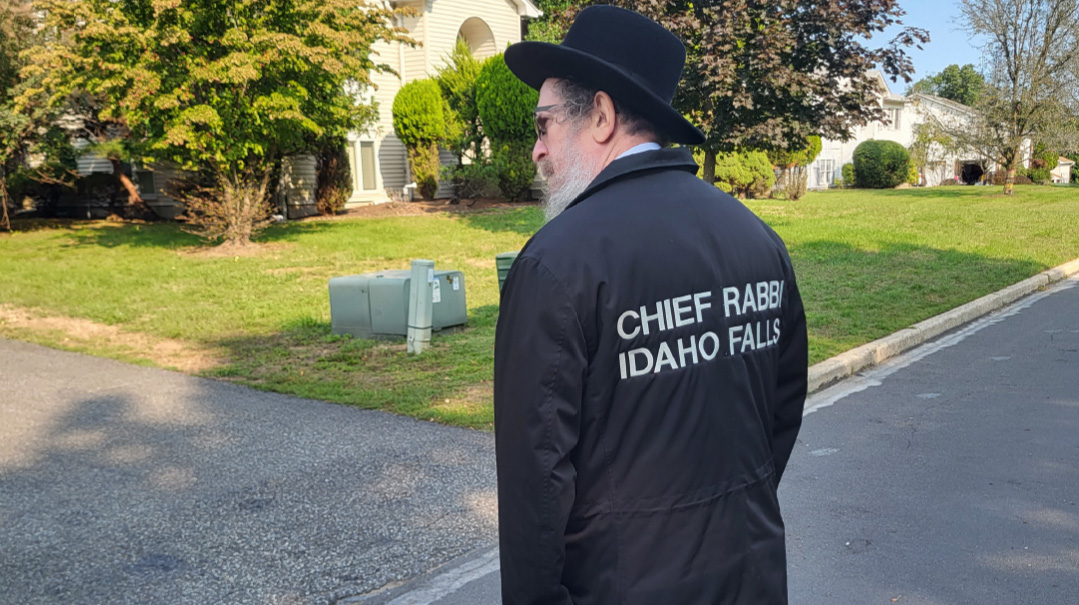
There isn’t a trace of Yiddishkeit in Idaho Falls, and feeling he needed to do something for his brethren, Rabbi Juravel approached the mayor and asked to be appointed the city’s chief rabbi
But, in fact, Rabbi Juravel is a rav, albeit one with a most unusual flock. Over the course of many years, Rabbi Juravel has traveled four times annually to eastern Idaho to supervise a number of plants producing potato products, most of them located near Idaho Falls, the state’s second-largest city. Most of its 62,000 residents are Mormons, but there is an exact minyan of Jews living there too.
And, says Rabbi Juravel, “I know all ten. If you want to know where there’s a Jew, ask a goy, and when a non-Jewish person in Idaho Falls pointed to a store and said, ‘It’s owned by a Jew,’ I went in. It turned out the proprietor is a Jewish woman married to a non-Jew who’d had a non-Orthodox conversion. She told me the kids in the local public school taunt her children for being Jews, and I told her she should feel good about this because it means her kids know they’re Jews and won’t marry out of the faith. She appreciated that, and later I got her kids to go to Eretz Yisrael on Birthright.”
There isn’t a trace of Yiddishkeit in the town, and feeling he needed to do something for his brethren, Rabbi Juravel approached then-Mayor Linda Milam and asked to be appointed the city’s chief rabbi. At first, he recalls, she wanted to know if that was a post to which he needed to be appointed by his church, but he assured her that in the Jewish religion the mayor has the power to appoint a chief rabbi.
Sure enough, just weeks later, a certificate arrived in the mail, gold-embossed with the city’s seal, naming Rabbi Abraham Juravel as the honorary Chief Rabbi of Idaho Falls. The “honorary” part did preclude him from receiving benefits as a city employee, he explains. Then again, since there’s no expiration date on the certificate, Rabbi Juravel apparently is chief rabbi for life.
The certificate hangs proudly in Rabbi Juravel’s office at the OU, and one of the local potato companies he supervises gave him a jacket identifying him as the chief rabbi, which he wears every day except Shabbos. He says for his part he’d wear it then too, since it’s warmer than his other coat, but, “my wife won’t let me get away with that.”
Rabbi Juravel takes his rabbinical post seriously, and so do his appreciative congregants. The local newspaper, the Idaho Post Register, has a column listing the local religious events for the week, and whenever he’s due for a kashrus inspection at local facilities, he sends a notice two weeks in advance to the column, announcing that “the chief rabbi will be in town, staying at such-and-such motel,” and listing his phone number. While he’s in town, he meets individually with members of the tribe and gives classes on Judaism as well.
Whether it’s working to ensure the highest halachic standards for kosher food or teaching Torah to a handful of Idaho Jews, Rabbi Juravel’s focus is always the same: to give fellow Jews the merit of keeping a mitzvah. And sometimes, it might be the last one they’ll do.
Once, while making his supervisory rounds of a local potato factory, Rabbi Juravel was approached by a non-Jewish lady who told him there was a terminally ill Jewish man in an Idaho Falls hospice who’d asked to see a rabbi. She forewarned him that the man’s non-Jewish wife wasn’t fond of anything related to Judaism, so he went in and just bantered with the man.
“He told me he was from Bensonhurst, and I said, ‘You’re from the fancy neighborhood; I’m from East New York,’ which got him to smile. Then I asked if he’d had a bar mitzvah, to which he replied, ‘Of course!’ So I asked if I could say Shema Yisrael with him, reassuring his wife that it was just a harmless Biblical verse. I put a yarmulke on him, and we said it together. A week later he was gone.”
And thanks to a rabbi who’s a chief in more ways than one, an estranged Jew in far-off Idaho was able to leave the world the kosher way.

Watching like a Hawk
Rabbi Sholem Fishbane says Rabbi Juravel is famous in kashrus circles for his unconventional but effective method of supervising the goings-on in the extremely hectic and challenging environment of a Pesach hotel’s industrial kitchen.
“He’s known as the guy who takes a chair, puts it on the top of a table right in the middle of the hotel’s kitchen, and climbs onto the chair. From that vantage point, he has a clear view of every corner of the room, enabling him to watch like a hawk everything that’s going on, from kashering to bringing in food supplies to the actual cooking.”
In his new sefer, Rabbi Juravel includes an English-language chapter on this very topic, written the way he speaks, in a down-to-earth style that’s leavened with touches of mischievous humor. Here are some excerpts from this brass-tacks guide to navigating the significant challenges posed when hundreds of frum Jews descend for one week on a usually non-kosher resort:
When checking the facility, start with the kitchen to see what kind of equipment there is, whether it is gas or electric, whether it can withstand kashering or not, whether charcoal or torches can be used, etc. Write down each and every piece of equipment that is there, then send an email describing how each one will be kashered and get an email confirmation from the hotel that these methods are approved by them.
Never use part of a kitchen. When the whole kitchen is kashered and only then, can the pots and pans be brought in. They can be put in their place only after they are painted — never rely on painting them after the cooking is over for the day. This will result in unmarked pans being in circulation and then the guessing game begins — is it meat, is it dairy, or pareve?
The same is true in the refrigerator — do not be helpful and do not share! Clean out the box, line the shelves, and then unload. Until it is totally ready, do not let them use one side only. If they plead with you, “we need to unload, we need it now,” the answer is very simple — no. Let them give you the unloading workers to clean the box and you will see how one refrigerator can be scrubbed and mopped out and the shelves lined in ten minutes’ flat. Just remember how and when to say no.
It goes without saying that if there is one dishwasher in the hotel, then there will be only one set of dishes, probably only meat dishes. To constantly kasher a dishwasher back and forth between meat and dairy is not only a violation of halachah, but also unrealistic. It’s almost impossible to do a thorough proper job of kashering in the limited time frame that is allotted to this task. Whoever “kashers” a dishwasher back and forth between dairy and meat has to be suffering from ostrich syndrome — burying his head in the ground and not seeing what is really happening.
Check the swimming pool. Separate hours for men and women are not enough. Where will the mechitzah be? Does it really block the view? Many hotels have the guest rooms overlooking the pool. Will the mechitzah block this view? Sometimes, pools are in the lobby. Will the mechitzah block the view of the pool from the lobby? I have heard the ridiculous statement many times that the men should not open the curtains of their rooms and not look down on the pool during women’s hours. The problem with this statement is that women may not go swimming in bathing suits in a place where they can be seen by men! The halachos of tzniyus are not based on an honor system that the curtains will stay closed. If this problem cannot be solved, do not agree to certify or supervise this hotel.
Two more critical factors in evaluating the suitability of a hotel for Pesach are the room keys and the elevators. More and more hotels today use electronic keys, which are muktzeh on Shabbos and Yom Tov. Asking a non-Jew or even just telling him your room number is a violation of “amirah l’akum” and possibly other issurim. Unless there are arrangements made in writing that there will be manual keys for the rooms, please do not even contemplate going to such a hotel. There are locksmiths who have the wherewithal to install an inexpensive key lock with a security chain, which can be used without having to turn off the electronics on the door lock.
The elevator is a very emotional issue, with some people demanding an elevator to take them up and down. All kinds of proposals will be made ranging from an elevator operator pressing the buttons for everyone and every floor, to having a person ask the guests “where to” but not telling the operator to press the button. Unless there is a commitment on the part of the hotel — in writing, of course — to have a Shabbos elevator, you can assume there will not be one. Be ready for all kinds of stories, convoluted heterim, and general verbal abuse.
“Hachanah.” This word is the mortal enemy — nay, the immortal nemesis — of a caterer. Even when the caterer does acknowledge that there is such a concept, explaining it to the kitchen help and the waiter staff is a challenge. After much thought and contemplation, I have come up with a simple way to make such a strange sounding concept comprehensible. Explain that each day of Shabbos and Yom Tov is to be viewed as a separate entity, and no preparations, whether food or dining room preparations can be done for another day. And although most people think the day starts at midnight, a new day actually starts at sundown. This should make the concept of not preparing before sundown for a meal that will be served after sundown a very simple one to understand.
Many years of supervising Pesach hotels tell me that there is enough time to set up a dining room from scratch after it gets dark. By having a speech in shul, then a chazzan, and then a long Sefirah, there is more than enough time to get the ballroom ready.
One of the most important details that must be addressed before undertaking the certification of a Pesach hotel is the humane treatment of the mashgichim. No more than three mashgichim can reside in a regular-sized room over Pesach, or four in an oversize room, and the beds must be real ones, not rollaway cots. There must be a table in the dining room with full waiter service for the mashgichim who are not on duty in the kitchen. The checks to the mashgichim must be made out to them before Yom Tov starts, and be in the hand of the head mashgiach before the last days of Yom Tov start. Mashgichim should be treated as the human beings they are, not as second, third, or fourth-class citizens.
(Originally featured in Mishpacha, Issue 931)
Oops! We could not locate your form.







